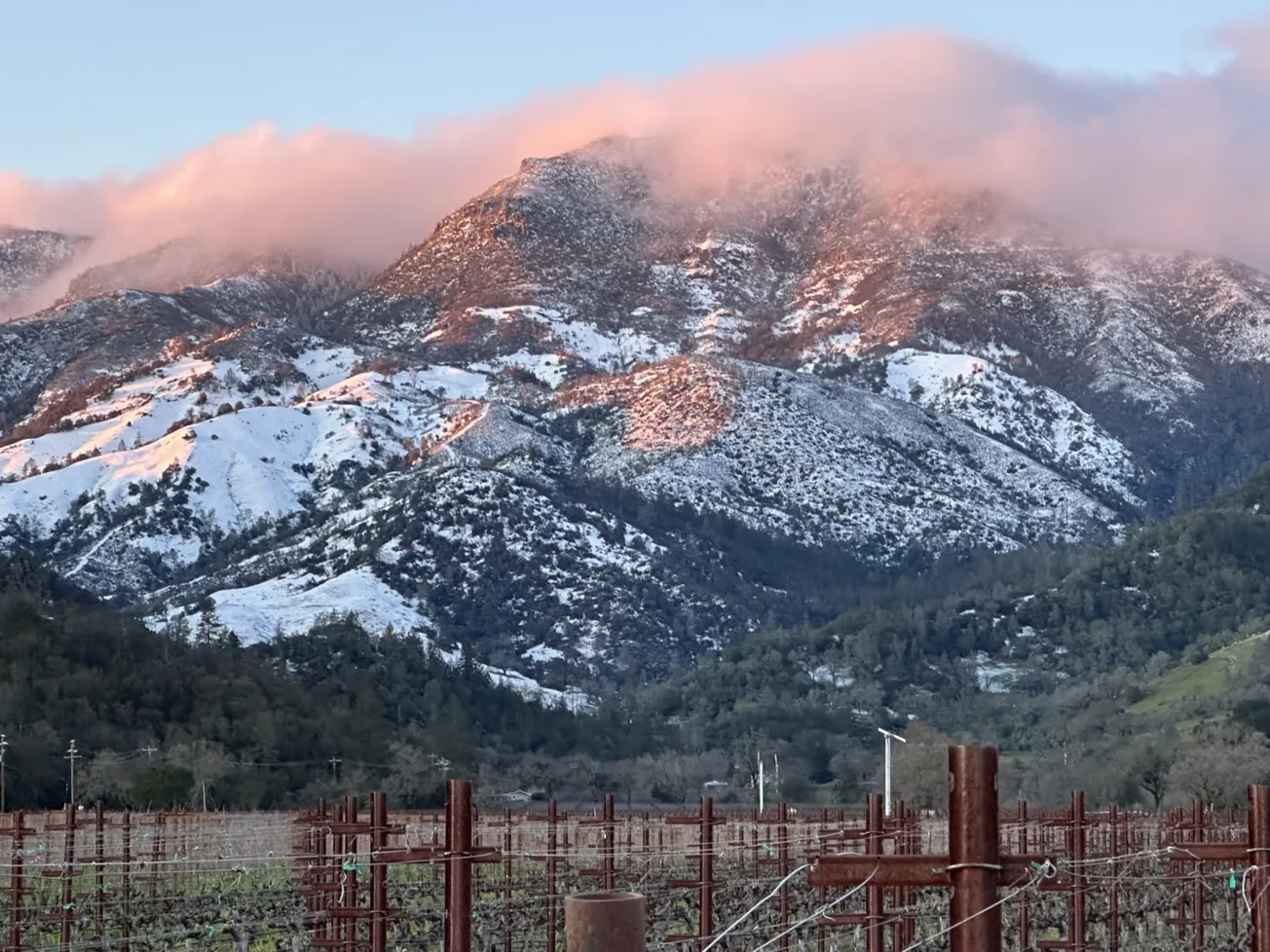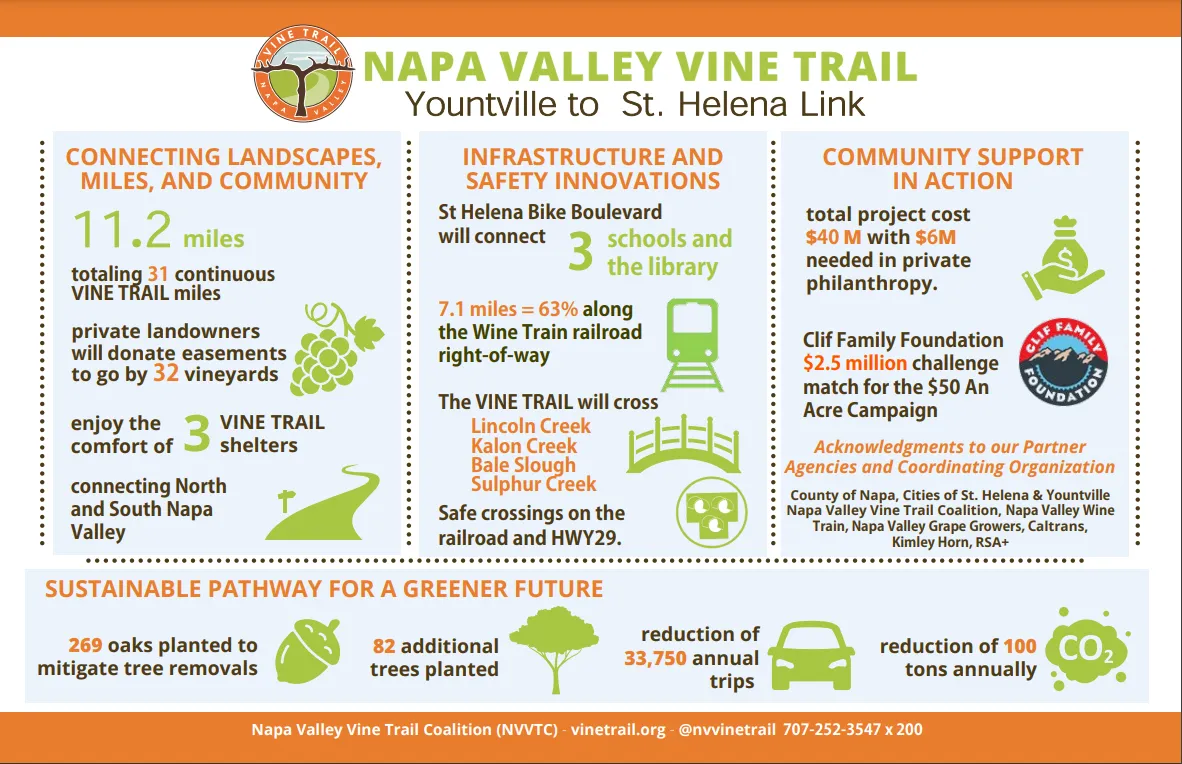During this time of celebrations steeped in different, long-standing traditions, all set against the darkness of the longest night, wondrous occurrences also seem to abound. Historical accounts from Napa County’s past about the lost being found and triumph over near tragedy provide proof this is the season of miracles.
The unexpected snowstorm
While some may dream of an idyllic wintry vision of a snowy white mantel covering the landscape, in 1896 three men found that dreamy scene to be a nightmare when, according to a Napa Register article from the day, Andrew Vekander and Lewis Raffe of Calistoga and Fred Killick of Oakland, decided to climb to the summit of Mt. St. Helena.
Their trek began on a clear day at Vekander’s Calistoga area ranch where the three friends mounted their horses and set off. Within a couple of hours, the ascent became challenging, with twists, turns and rough terrain. Nonetheless, Killick commented, “The scenery was inspiring and most beautiful as we ascended.”
By mid-afternoon they had reached the Mountain Hotel perched on the 4,343 ft. mountain. The trio stopped to stable their horses before climbing on to the summit on foot with scant provisions and no water. Killick said, “A flurry of snow surprised us, but as the sky was clear and only small patches of clouds were seen floating above we did not fear a storm.”
Their hike was filled with obstacles and unfortunate decisions. At certain points they were literally crawling on their hands and knees due to the thick and tangled overgrowth of brush. The men did enjoy the discovery of the iron stake marking the convergence of Napa, Sonoma and Lake counties. This marker would play an important role in their survival.
Near the halfway point to the summit, the trio found themselves suddenly enveloped in a thick fog accompanied by strong winds. They left the trail to find shelter about 200 feet below the summit. At a rocky outcropping was a small grove of dead oak trees. The men quickly gathered as much of that wood as they could carry to their shelter and started a campfire. By this time the snow was falling heavily.
“We decided it would be folly to attempt to return to the hotel in the fog, storm and darkness,” Killick said. “We made ourselves as comfortable as we could under the circumstances.”
The men could not lay down to rest because the wet snow would have soaked their clothing, so they stood until daylight. At 6 a.m. the snowstorm was still intense but they decided to hike out. At first they could not agree as to the their path because more than a foot of snow covered all signs of the trails. However, once they found the three-county marker, they knew the direction to hike. Fighting their way through the heavy underbrush covered in snow for hours, the wet, cold and exhausted trio made it to the Mountain Hotel around 9 a.m.
Inside, in dry clothing, sitting before a warming fire and thoroughly enjoying food and water, they learned search parties had been sent out to look for them. Many had feared the worst. Although no longer facing the unknown dangers of the Mt. St. Helena’s summit, the men still had to make their way back to Vekander’s ranch. According to the article, the horses were frightened by the snow making the final leg of their odyssey another ordeal.
“We were all glad when we were safe in the valley and were soon at Vekander’s ranch,” Killick concluded. “It was a novel and trying experience, and not one to be forgotten soon, I can assure you.”
Saved by a Boy Scout
Generations later, in 1932 a local boy saved a life that was very nearly lost. According to The Weekly Calistogan, James Bearce,13, was a Boy Scout and member of Troop 10 of the Silverado district.
On a December afternoon, Bearce was playing football on a vacant lot when he heard a commotion coming from the direction of the nearby Napa River. Going quickly to investigate, he witnessed another youth being pulled out of the waters by a friend.
Bearce immediately sprang into to action and took charge. He refused to allow the adults on the scene to move the unconscious boy to a nearby house. Bearce, instead, began to perform artificial respiration on the other boy, a skill he had learned as a Scout.
The newspaper added, “Although the near-drowned youth had been under water for several minutes and was believed by most of the witnesses to be dead when removed from the river, he was finally resuscitated by Bearce just before the fire department arrived with a pullmotor.”
The fire department officials and physicians agreed that Bearce’s swift action in administering artificial respiration “undoubtedly saved the life of the other boy.” Bearce received a special citation for his heroic and lifesaving measures.
A triangular relationship
The third and final account of a miracle began with a triangular relationship. Typically, these three-pointed relationships result in heartbreak and regret but not so for this true story about reuniting a family after nearly 50 years of separation.
In 1901 a couple identified as Mr. and Mrs. J.E. Wootten were dining with a friend John Zuver, who claimed he could identify a person’s nationality based in their last name.
Mrs. Wootten, intrigued by his claim, said her maiden name was Beck. At that moment, a missing piece to a puzzle fell into place for Zuver. He said Mrs. Wootten had always reminded him of another in his circle of friends and acquaintances but could never figure out why. He wondered if she could be the sister of his friend John Beck.
It was Mrs. Wootten’s turned to be astounded, and she recounted the story of her long-lost brother John Beck, who had left the family home in San Francisco decades earlier.
According to The Napa Daily Journal, John Beck had struck out on his own at a young age. He traveled and worked throughout Northern California before finally settling in eastern Napa County’s Cappelle Valley where he owned and cultivated his 362-acre farm.
Shortly after his dinner with the Woottens, Zuver went to John Beck to recount the amazing story. Beck confirmed its validity, adding that he had returned to San Francisco to find his mother and siblings only to discover they had moved to points unknown. Discouraged, he eventually gave up his search. By 1901 he was certain they had all died.
Happily that was not the case. Within a few days John Beck and his sister were reunited and subsequently his family expanded to include a younger brother and two more sisters. One of those sisters he never knew had existed as she was born after he left the family home. John also discovered he had a few half brothers and sisters.
Overjoyed to reunite with his siblings, John Beck was most anxious to see his 84-year-old mother. For that reunion he made the trip to San Benito County where she was living in 1901. Before he arrived, his siblings prepared their mother as they feared a surprise visit would prove to be too much for the frail woman. These concerns proved unwarranted as it was a most joyous reunion of a mother and son – made possible by chance and a third party. Truly a miracle!
Rebecca Yerger is a Napa Valley historian and writer. Contact her at yergerenterprises@yahoo.com.








